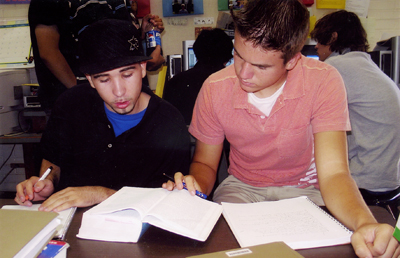All Nonfiction
- Bullying
- Books
- Academic
- Author Interviews
- Celebrity interviews
- College Articles
- College Essays
- Educator of the Year
- Heroes
- Interviews
- Memoir
- Personal Experience
- Sports
- Travel & Culture
All Opinions
- Bullying
- Current Events / Politics
- Discrimination
- Drugs / Alcohol / Smoking
- Entertainment / Celebrities
- Environment
- Love / Relationships
- Movies / Music / TV
- Pop Culture / Trends
- School / College
- Social Issues / Civics
- Spirituality / Religion
- Sports / Hobbies
All Hot Topics
- Bullying
- Community Service
- Environment
- Health
- Letters to the Editor
- Pride & Prejudice
- What Matters
- Back
Summer Guide
- Program Links
- Program Reviews
- Back
College Guide
- College Links
- College Reviews
- College Essays
- College Articles
- Back
Thrills of Trills
Many non-English spoken languages involve sounds that are unique compared to the many sounds produced in the primary dialects of English. Whether the sounds are clicks within the Hausa language and most especially !X? language, the various differing tones found in Igbo and Cantonese, or the implosive consonant sounds found in many Native North American languages, these can be very difficult to produce for those who do not utilize such sounds in their daily language or at least not in the same way it is in the language of interest. This is very prevalent when English speakers are learning Spanish. One major issue with students have with Spanish is “rolling the r” or as a linguist would say the “alveolar trill.” This sound and many similar ones are common in other languages as well, such as in a dialect of French in which the “r” in the beginning of a word’s second syllable is pronounced with a trill in the back of the mouth. Another common trill involves a bilabial trill, which many English speakers may know how to perform despite not thinking of it as a phoneme (a legitimate sound) within language. In order to produce a trill, one must first consider the place of articulation. In mainstream Spanish, the place of articulation, when “rolling the r” is the alveolar ridge within the mouth which is between the palate and the teeth, so the tongue should reach the roof of the mouth. To produce a bilabial trill the two lips should be closed together. Other more difficult trills tend to involve placement of the tongue’s tip or back parts touching a different area of the mouth such as the retroflex, velar or uvular trills. After placing the tongue (or lips) in the right position one must finally exhale enough air to push down the tongue (or out the lips) which should be loose enough to have the ability to be pushed off of its position temporarily, but tense enough to rise back up to its position. Trills can usually take about 3 vibrations in natural languages. Although English-speakers have difficulty with trills, they can easily be performed with an understanding of how to position the mouth a opposed to the typical listen and learn style used to teach in other contexts. However, trills are only one of the many possible sounds or linguistic features that may seem foreign to English-speakers. In a world tens of thousands of languages, there are so many various possibilities for the sounds featured within them.

Similar Articles
JOIN THE DISCUSSION
This article has 1 comment.

I decided to write this piece after discovering some of my fellow peers at my school who were taking Spanish as a second language didn't know how to make a trill sound. I hope this has been helpful to others trying to learn how to trill.